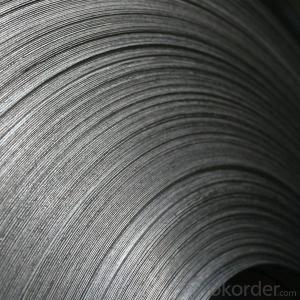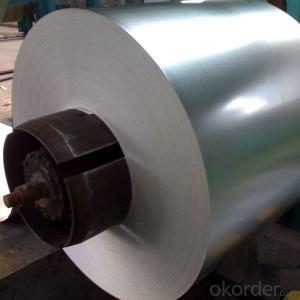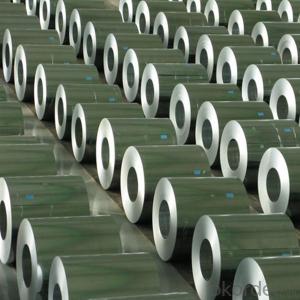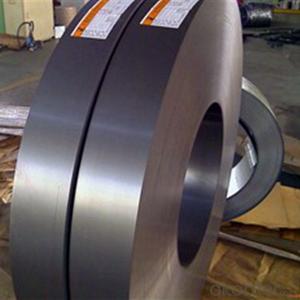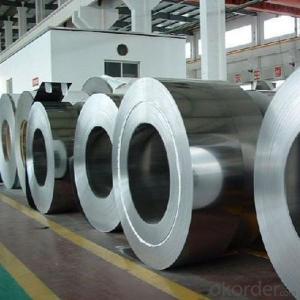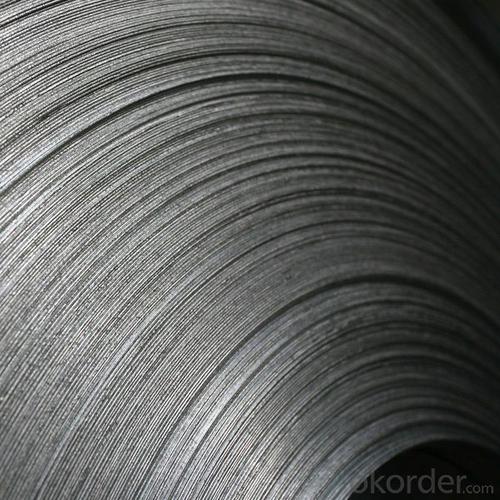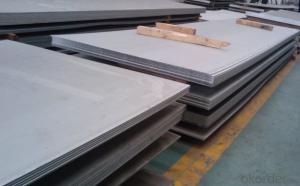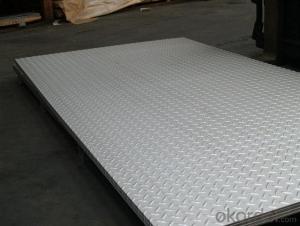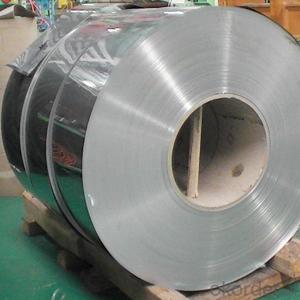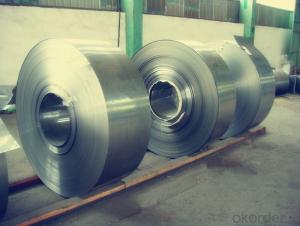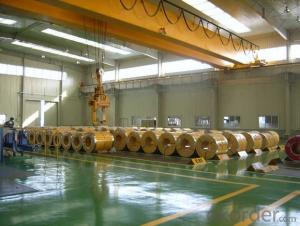Hot Rolled·Steel Coils Hot Rolled Stainless Steel Coils NO.1 Finish
- Loading Port:
- Tianjin
- Payment Terms:
- TT OR LC
- Min Order Qty:
- 25 m.t.
- Supply Capability:
- 20000 m.t./month
OKorder Service Pledge
OKorder Financial Service
You Might Also Like
Specification
Products Description for Stainless Steel Coils/Sheets:
Product | stainless steel coils/plates/sheets | ||
Discharge Port | Any Port, China | ||
Size | Coils | Cold Rolled: | Thickness0.3-8mm,Width:280-2100mm |
Hot Rolled : | Thickness3-14mm,Width:650-2100mm | ||
Plates | Thickness2-80mm,Width:1500-3000mm | ||
Coil Weight | About 20 Tons | ||
Grade | 201,202,304/304L/304H,316/316L/316H,321/H,310S,409/L,430 etc. | ||
Technique | Hot Rolled/Cold Rolled | ||
Finish | 2B, BA, 2D, No1, No2, No4,NO.8,SB etc | ||
Edge | Mill Edge / Slitting Edge | ||
Package | In bundles, or as customer's requirement | ||
Place of Origin | Made in China | ||
MOQ | 20 Tons | ||
Packaging & Delivery for Stainless Steel Coils/Sheets:
Packaging Detail Standard export packing or following customer's demand
Delivery Time: Within 30-40 days after deposit or according to the order quantity
Detail picture for Stainless Steel Coils/Sheets
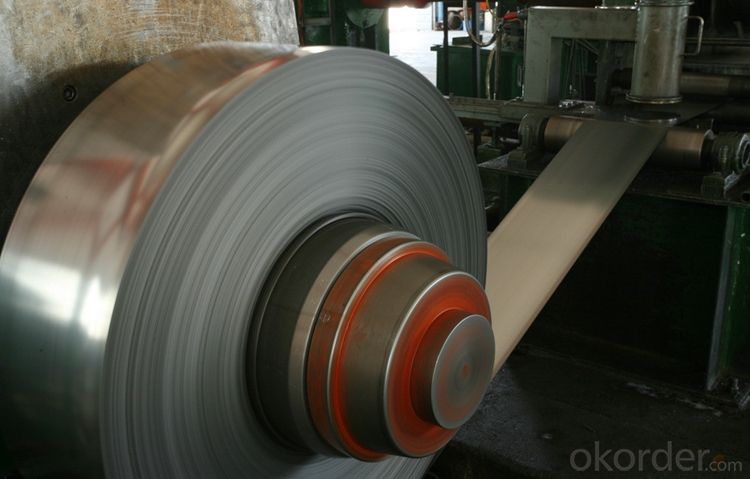

Application for Stainless Steel Coils/Sheets:
Boiler heat exchanger, machinery andpetroleum ,chemical industries, hardware fields,Food industry,construction material,kitchen utensils, building construction, medical equipment,chemical tank, pipe etc
FAQ for Stainless Steel Coils/Sheets:
Q:How to order?
A: Please send us your purchase order by email or fax .or you can ask us to send you a proforma invoice for your order .We need to know the following information for your order.
1) Shipping information-company name, street address, phone number, fax number, destination sea port
2) Product information – Quantity, Specification (steel type, thickness, width, surface finish)
3) Delivery time required
4) Forwarder's contact details if there's any in China
FAQ for Stainless Steel Coils/Sheets:
Q:What are the advantages of your company ?
A: We have many professionals, technical personnel, more competitive prices and best after-dales service than other stainless steel companies.
Q:Can you arrange the shipment ?
A: Sure we can help you with the shipment. We have forwarders who have cooperated with us for many years.
- Q: What is the width of the carbon steel coil and the width of the stainless steel coil, one is 1250, and the other is 1219?
- A continuous rolling mill is put in billions of dollars, but this is the rolling mill, and there are many gold furnaces. But the technical content of carbon steel with stainless steel is different, our country in more than 10 years ago the ability of continuous rolling of stainless steel is not high, equipment are imported, the stainless steel mill is dominated by 1219-1300, but also the development of national wide stainless steel 1500-2050, but the price is expensive at least thousands of dollars a ton, after all put the equipment to recover the cost, and the number of business orders is not much, it is difficult to find a spot on the market. Carbon steel countries have developed for many years, technology and equipment are mature, so the market has 1250 as production standards.
- Q: What are the limitations of using stainless steel sheets?
- Some limitations of using stainless steel sheets include their high initial cost, susceptibility to scratching, potential for corrosion in certain environments, and difficulty in shaping complex designs. Additionally, stainless steel sheets are relatively heavy, which can be a disadvantage in certain applications where weight is a concern.
- Q: Can stainless steel sheets be used for architectural railings?
- Yes, stainless steel sheets can be used for architectural railings. Stainless steel is a popular material choice for architectural railings due to its durability, corrosion resistance, and aesthetic appeal. Stainless steel sheets can be custom fabricated and shaped into various designs and sizes to meet the specific requirements of the architectural railing project. Additionally, stainless steel sheets can be finished in different ways, such as brushed, polished, or textured, to achieve the desired look and feel. Overall, stainless steel sheets are a versatile and reliable choice for architectural railings, providing both functionality and visual appeal.
- Q: Can stainless steel sheets be used for fire-rated applications?
- Yes, stainless steel sheets can be used for fire-rated applications. Stainless steel is known for its high melting point and excellent heat resistance properties. It retains its strength and integrity even at high temperatures, making it a suitable material for fire-rated applications. Stainless steel sheets are often used in fire-rated doors, walls, and ceilings, providing a durable and reliable barrier against fire. Additionally, stainless steel's corrosion resistance properties make it a long-lasting option, ensuring its effectiveness in fire-rated applications over time.
- Q: Why do galvanized and stainless steel sheets buy more expensive than thin ones?
- Effects: galvanized steel sheet is to prevent corrosion of steel plate surface and prolong its service life, and the surface of steel plate is coated with a layer of metal zinc. This kind of zinc coated steel plate is called galvanized sheet.
- Q: What is the tensile strength of stainless steel sheets?
- The tensile strength of stainless steel sheets can vary depending on the specific grade and thickness of the material. Generally, stainless steel sheets exhibit a higher tensile strength in comparison to other materials. For instance, stainless steel sheets like the commonly used 304 and 316 grades typically possess tensile strengths ranging from 515 to 690 megapascals (MPa) or 74,800 to 100,000 pounds per square inch (psi). However, it is crucial to note that the tensile strength values may differ for various grades and thicknesses of stainless steel sheets. It is always advisable to seek precise information regarding the tensile strength of specific stainless steel sheets from the manufacturer or supplier.
- Q: Are stainless steel sheets suitable for corrosive environments?
- Yes, stainless steel sheets are highly suitable for corrosive environments. This is because stainless steel contains alloying elements such as chromium, which forms a protective layer on the surface, preventing corrosion and rusting. Additionally, stainless steel has excellent resistance to a wide range of corrosive substances, making it ideal for various industries and applications where exposure to corrosive environments is common.
- Q: What are the advantages of using stainless steel sheets in the medical industry?
- There are several advantages of using stainless steel sheets in the medical industry. Firstly, stainless steel is highly resistant to corrosion, making it a durable and long-lasting material for medical equipment and instruments. This resistance to corrosion is crucial in maintaining sterile conditions and preventing the growth of bacteria or other harmful microorganisms. Additionally, stainless steel is easy to clean and sanitize, reducing the risk of cross-contamination. It is also non-reactive, meaning it does not release any harmful substances or chemicals into the medical environment. Lastly, stainless steel has a high strength-to-weight ratio, making it ideal for constructing lightweight yet sturdy medical devices. Overall, the use of stainless steel sheets in the medical industry ensures safety, hygiene, and reliability.
- Q: Are stainless steel sheets resistant to alkaline solutions?
- Generally, stainless steel sheets are resistant to alkaline solutions. They have a reputation for being corrosion-resistant and can tolerate exposure to various chemicals, including alkalis. The protective oxide layer on the surface, formed by the high chromium content in stainless steel, aids in preventing corrosion and deterioration. However, it's worth noting that the resistance of stainless steel to alkaline solutions may differ depending on the specific grade and composition. In certain instances, prolonged exposure to highly concentrated alkaline solutions or aggressive alkaline substances could potentially harm the stainless steel surface. Therefore, it is advisable to consult the manufacturer or supplier to ensure the appropriate grade of stainless steel is chosen for specific alkaline applications.
- Q: What is stainless steel plate wire?
- But in the stainless steel industry said decimillimeter, such as stainless steel plate with the thickness of 1mm, the tolerance of 0.91 plus or minus 1 wire, a tolerance of plus or minus 0.01mm 0.91mm. That is to say here is actually in mathematics centimillimeter decimillimeter.1 wire =0.01 mm
Send your message to us
Hot Rolled·Steel Coils Hot Rolled Stainless Steel Coils NO.1 Finish
- Loading Port:
- Tianjin
- Payment Terms:
- TT OR LC
- Min Order Qty:
- 25 m.t.
- Supply Capability:
- 20000 m.t./month
OKorder Service Pledge
OKorder Financial Service
Similar products
Hot products
Hot Searches
Related keywords
